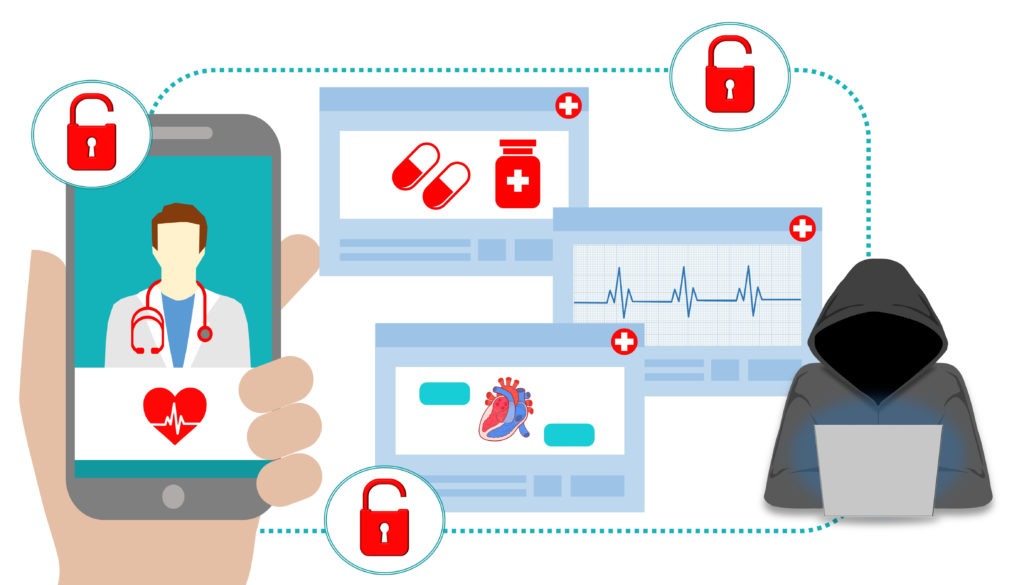
Tips for Achieving Data Security and Compliance in Healthcare Cybersecurity
Electronic health records (EHRs) and electronic medical records (EMRs) are incredibly useful, allowing for easy and quick access to patient data for healthcare purposes. Unfortunately, this digitization introduces new risks to healthcare facilities and their patients. Personal medical information has become an attractive target for cybercriminals. This makes data security a key issue in healthcare (HIPAA compliance), but healthcare cybersecurity protection shouldn’t be hard.
In 2021 alone, nearly 45 million health records were exposed or stolen across 686 healthcare data breaches. Patient data records contain sensitive details such as personally identifiable information (PII) and treatment history, which can be used as the basis for more targeted attacks. The security of data in healthcare is in need of dire upgrades against modern threats.
Protecting healthcare information is such a big deal that several policymakers, including the US federal government, have put forward legally-enforceable data security and privacy standards for healthcare providers. The Health Insurance Portability and Accountability Act (HIPAA) has the biggest impact on healthcare institutions operating in the US. It sets guidelines and standards that guarantee safety and privacy when handling sensitive healthcare information. Above all, non-compliance with HIPAA or violating its rules can result in heavy financial and civil penalties.
So, let’s look at five cybersecurity measures you can take today to avoid falling victim to data breaches or being on the receiving end of HIPAA legal action. Start with prevention, of course.
Strict access control to sensitive data
Firstly, the best way to secure information is to keep it under lock and key and on a need-to-know basis. This means putting a strong user authentication system in place and assigning access rights only to individuals who need the data to conduct their work. This principle is known as least privilege access. It minimizes data security and privacy risks and promotes security accountability. An effective access control system includes:
- Strong user authentication, preferably multi-factor authentication (MFA)
- Access logs
- User behavior analytics
- User and access point monitoring
- Data encryption
- Tiered user privileges
Zero-trust approach to healthcare cybersecurity
Secondly, the zero-trust security model is based on the notion that no user, device, application, or request can be trusted unless verified. Under the principles of zero-trust, all processes or systems inside and outside a network are considered potential threats and must be evaluated on a case-by-case basis. This helps automate data security in healthcare – taking the onus away from humans. This security architecture incorporates several security policies, layers, and resources, such as:
- Continuous assets monitoring
- Network micro-segmentation
- Minimized lateral movement
- Least privilege access
- MFA
- Continuous user and device validation

Cybersecurity awareness
Thirdly, system users are the weakest link in any cybersecurity system. According to DBIR 2021, 85 percent of data breach incidents in 2020 involved a human element. Therefore, employees can fall for attacks such as social engineering scams and make poor decisions that jeopardize data security and privacy.
Most importantly, educating healthcare employees on cybersecurity opens their eyes to the digital threats facing the industry and helps instill some level of security accountability throughout the organization. Lastly, HIPAA compliance requires that all employees understand their personal and professional responsibilities in handling sensitive patient data.
Regular risk assessments
Performing regular vulnerability assessments is a crucial part of a proactive cybersecurity strategy. A vulnerability assessment primarily helps identify potential security weaknesses in healthcare IT, measure the likelihood of attacks, and estimate the extent of damage that known threats could inflict. This information is invaluable in guiding security experts to redesign, fine-tune, or improve security systems.
Perform a risk assessment at least once every year, ideally every quarter. That’s in addition to continuous systems monitoring, which is also a form of ongoing, real-time risk assessment.
Incident response planning
One of HIPAA’s requirements is having a solid incident response plan. However, not everyone has a great one or even a plan to begin with. An IRP is a guide describing the protocols and procedures that must be followed in the event of an attack. This centers around identifying, containing, and eradicating an imminent threat. In addition, the HIPAA Breach Notification Rule requires that certain data breaches be clearly and promptly reported to the relevant authorities and the patients affected by the healthcare cybersecurity data breach.
Bottom line
In conclusion, achieving dependable cybersecurity is no easy feat. And the pressure to comply with HIPAA and other data security regulations raises the bar for cybersecurity standards in healthcare. Therefore, you have to go that extra mile to ensure that your patients’ personal health information doesn’t fall into the wrong hands.
A big part of securing healthcare cybersecurity data involves strong user authentication and minimizing human error in security operations. GateKeeper can help you do both. The proximity-based 2FA/password management solution provides wireless login, proximity login, and passwordless 2FA solutions, among other HIPAA compliance-centered security products. So, contact us to learn more or sample our robust, automated security solutions that helps optimize access control workflow in healthcare clinics. After that, access your EMR applications without typing passwords using GateKeeper Proximity login.
See GateKeeper Enterprise advanced MFA in action.
Take a self-guided tour of how you can evolve from passwords. Then you're really saving time with automation.




